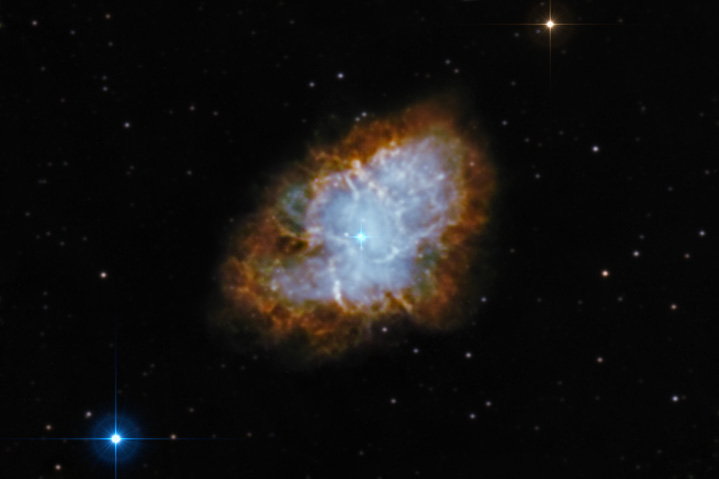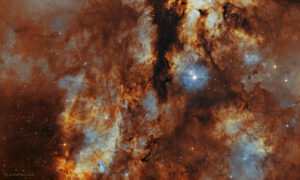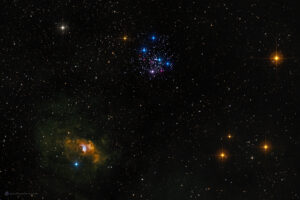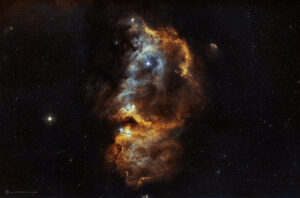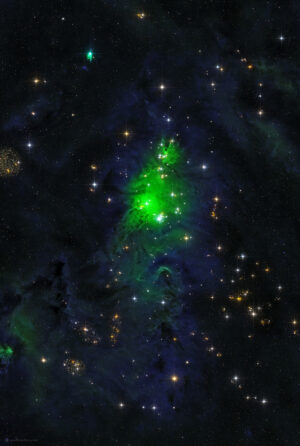The Crab Nebula is about 6.5 thousand light years distant, and only about 11 light years across. It was formed when a star, having used up its nuclear fuel, collapsed in on itself in a colossal explosion that was witnessed by Chinese astronomers in 1054. This was the first instance in which the birth of a nebula was directly traced to a human observation in the past. The collapse of the stellar core created a dense, rapidly rotating star, for the same reason ice skaters spin faster when they retract their arms. The rapid spinning causes the light from the star to pulsate, akin to a giant lighthouse in space. Consequently, the central star in the Crab Nebula is referred to as a pulsar. Thanks to the medieval observers who documented the explosion, we know the exact age of the pulsar, which helps scientists better understand the physics of its formation.
